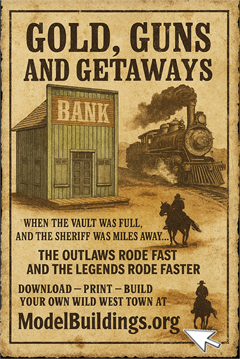Everything on model trains, model railroads, model railways, locomotives, model train layouts, scenery, wiring, DCC and more. Enjoy the world's best hobby... model railroading!
Post-War To Pre-1960 Layout Question
“I received the ebook without a hitch and spent many enjoyable moments perusing it. There is a wealth of information in your book and I am very happy to have purchased it.”
Here is a question that a fellow blog readers might like to help with.
Next step is to actually start building. As you suggest stongly anyway we are doing our research and that is the freebie part of the project. There is plenty of research to do and it is turning out to be fascinating. My husband and I will be modeling post-war to pre-1960 working class/freight Montreal in N-scale and we will concentrate on the CP rolling stock along with its affiliated companies. All we need to find now is a layout that would be suitable as I like to run mainline and my husband wants to shunt. One of your layouts in section 6 would probably be a good compromise.
Here is a question your readers could answer for me – As it is given in HO scale, can I simply do a division by 2 for the size of the board and track sizes to get the same layout in N?
Would your model railroad blog readers have any other suggestions where I could find either layouts or layout building programs on the Internet?
One Response to Post-War To Pre-1960 Layout Question
Leave a Reply















You could halve an HO layout to get an approximation of N dimensions, but you will have to watch out for minimum radius, because N is not 50 percent of HO but 54.4 percent. Believe me, it makes a difference! If the HO layout has an 18-inch minimum radius, the corresponding value in N is not 9 inches but 9.75 inches. If you happen to be running small engines and 40-50 foot cars, you can accept the tighter curves.
A better rule of thumb would be to take 75 percent of the HO dimensions: a 4 x 8 foot layout thus becomes 3 x 6 feet. You get broader curves, and once you have adjusted the track spacing you may have room for a slightly bigger yard or more industry sidings, or you can go with the higher scenery-to-track ratio.
In any event, a published track plan or project railroad should be a guideline. You don’t have to do things exactly that way.